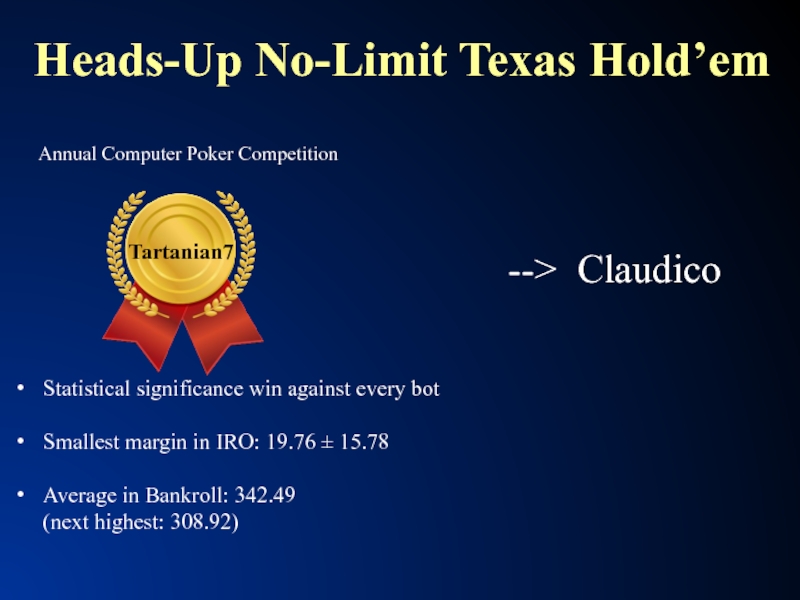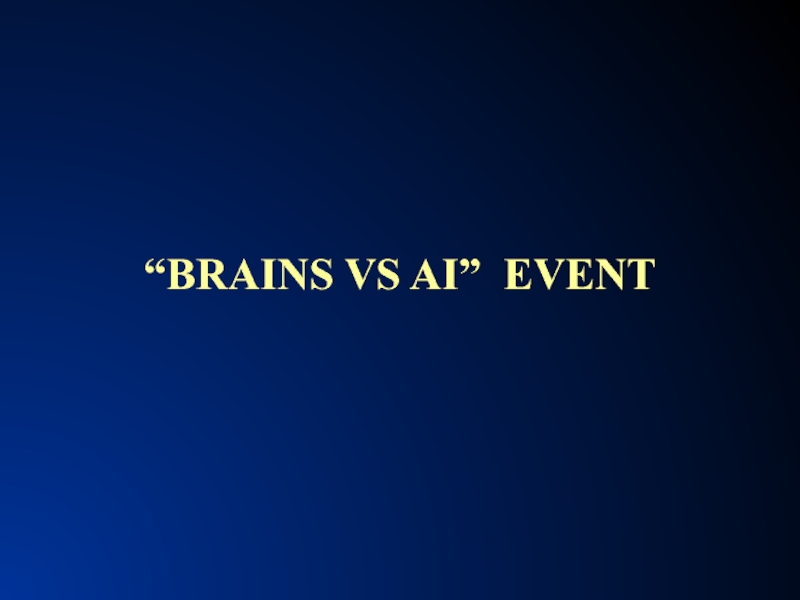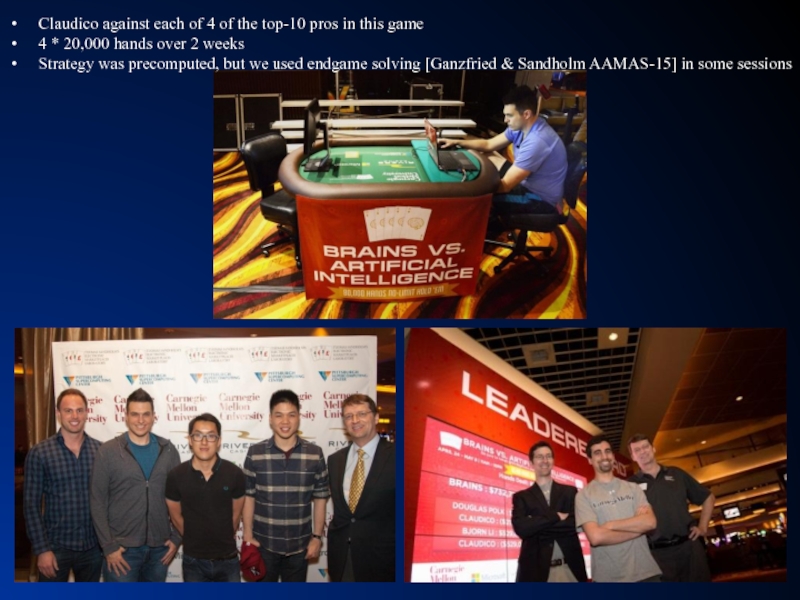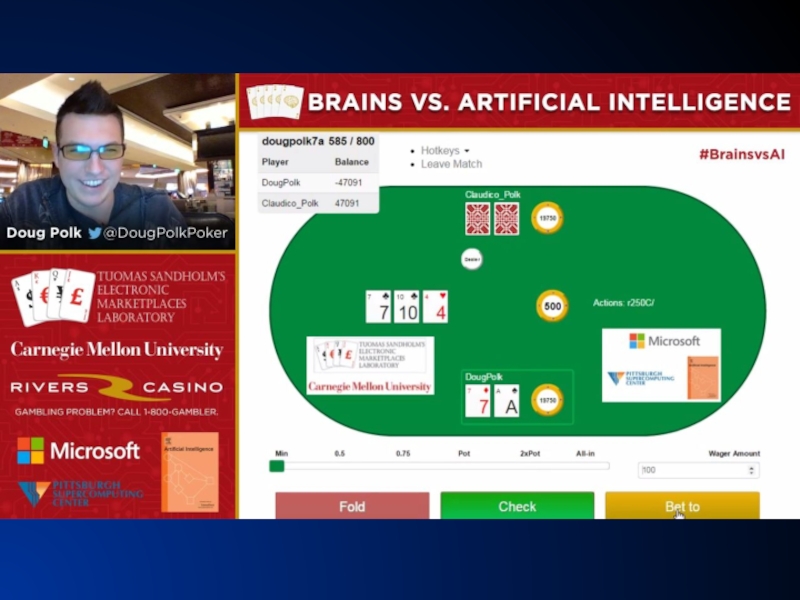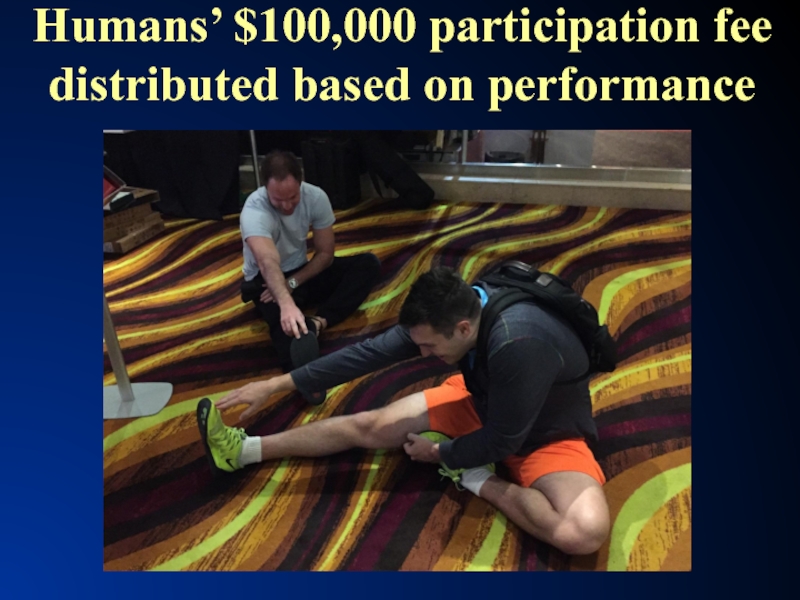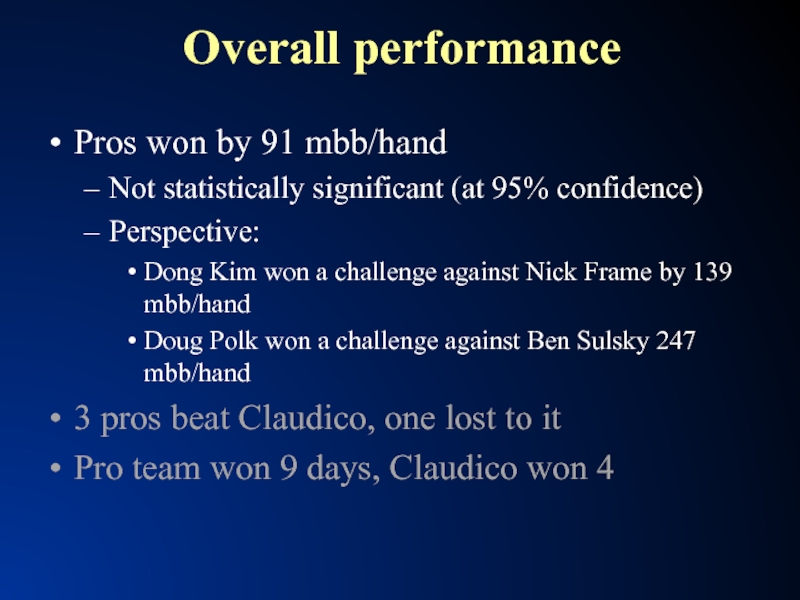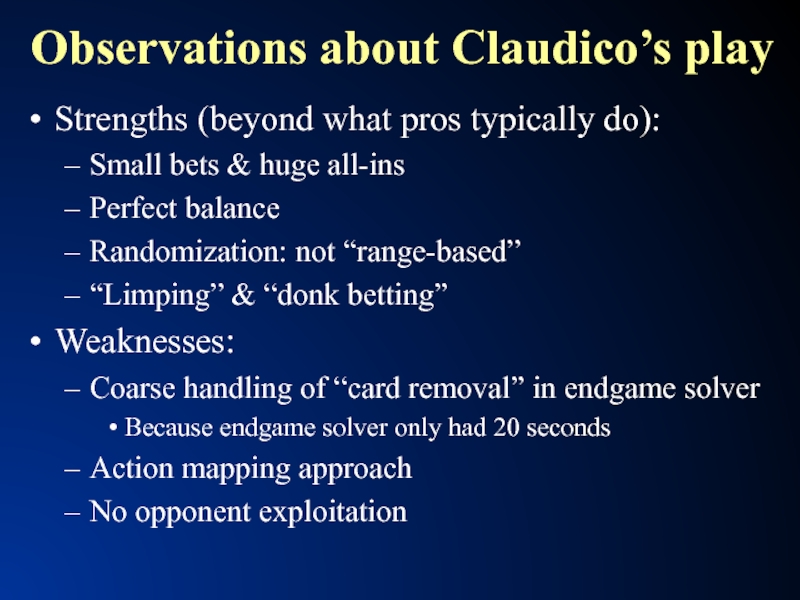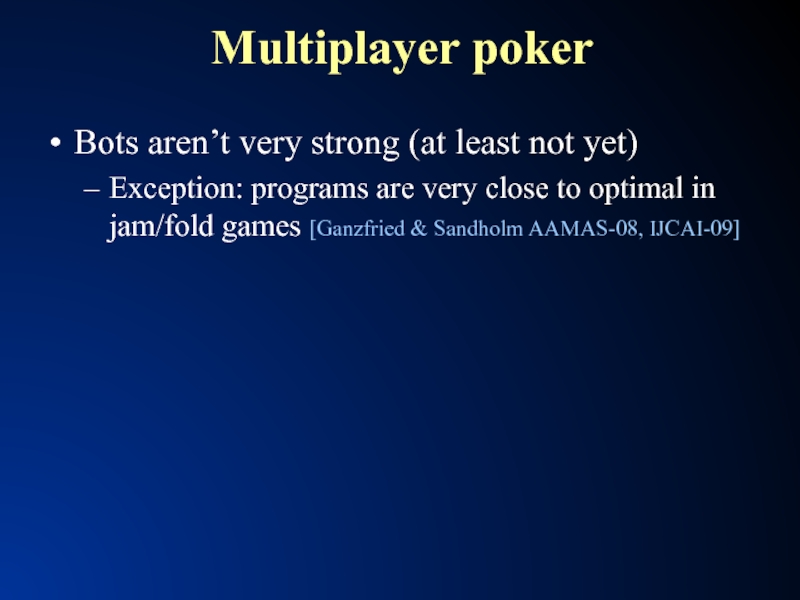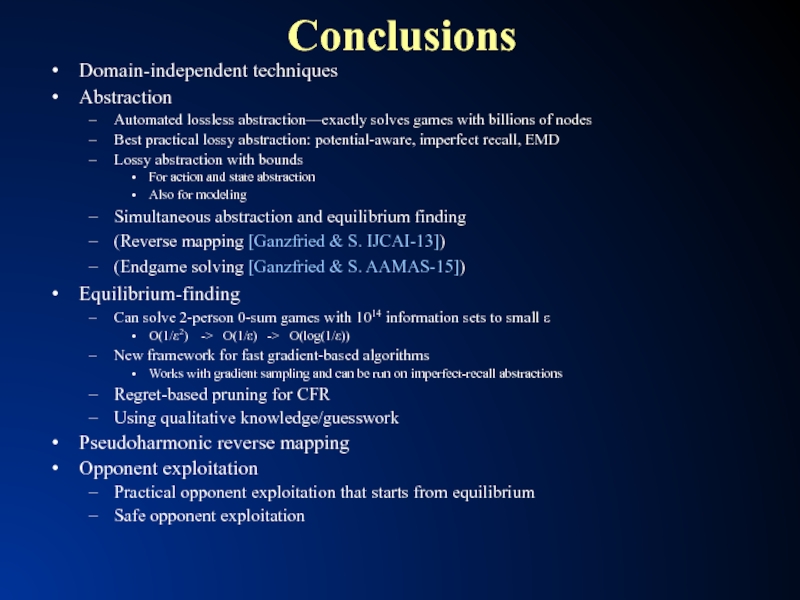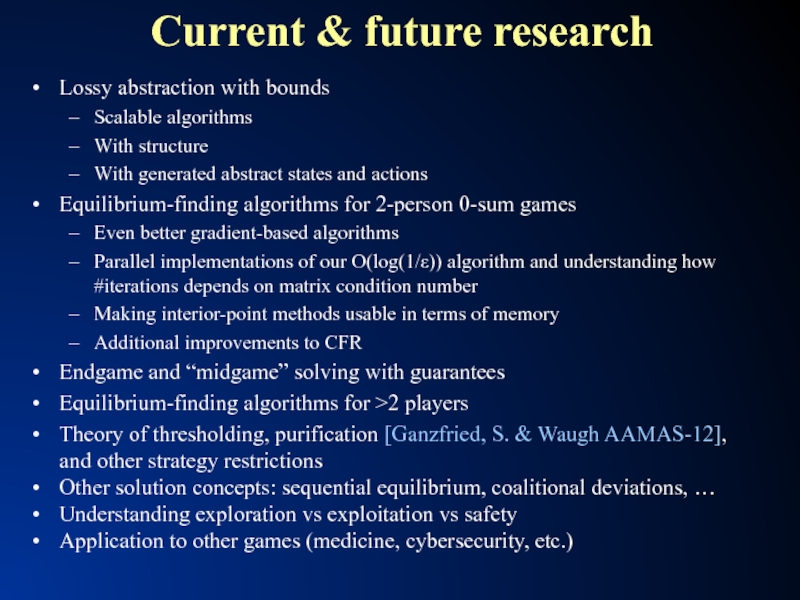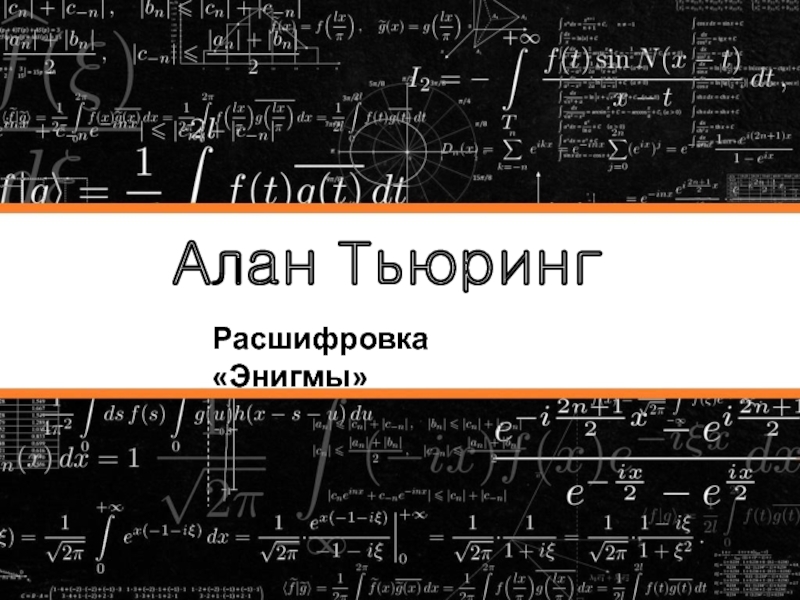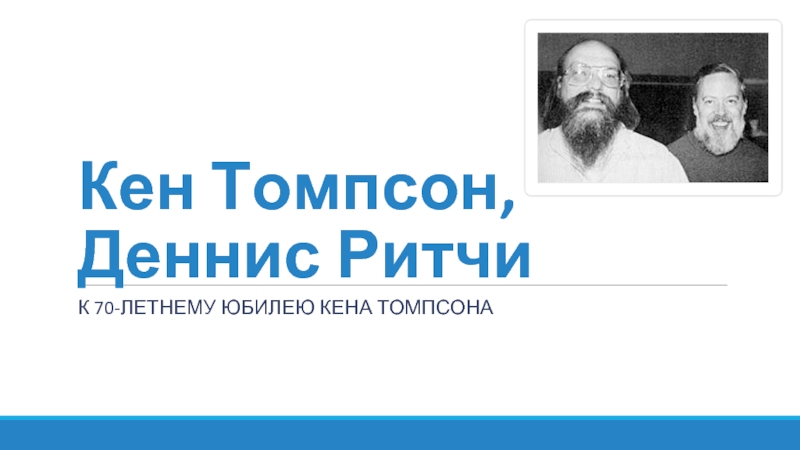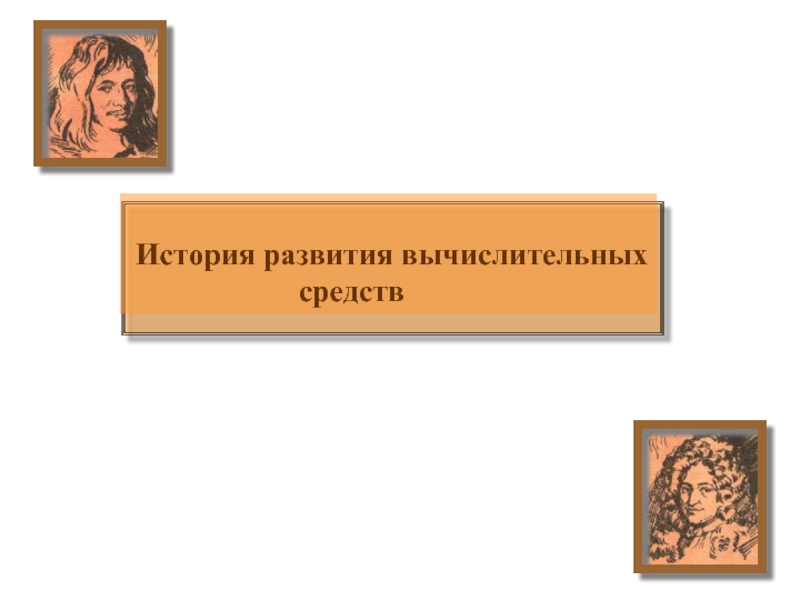- Главная
- Разное
- Дизайн
- Бизнес и предпринимательство
- Аналитика
- Образование
- Развлечения
- Красота и здоровье
- Финансы
- Государство
- Путешествия
- Спорт
- Недвижимость
- Армия
- Графика
- Культурология
- Еда и кулинария
- Лингвистика
- Английский язык
- Астрономия
- Алгебра
- Биология
- География
- Детские презентации
- Информатика
- История
- Литература
- Маркетинг
- Математика
- Медицина
- Менеджмент
- Музыка
- МХК
- Немецкий язык
- ОБЖ
- Обществознание
- Окружающий мир
- Педагогика
- Русский язык
- Технология
- Физика
- Философия
- Химия
- Шаблоны, картинки для презентаций
- Экология
- Экономика
- Юриспруденция
The state of techniques for solving large imperfect-information games презентация
Содержание
- 1. The state of techniques for solving large imperfect-information games
- 2. Incomplete-information game tree Information
- 3. Tackling such games Domain-independent techniques Techniques for
- 4. Most real-world games are like this Negotiation
- 5. Poker Recognized challenge problem in AI since
- 6. Our approach [Gilpin & Sandholm EC-06, J.
- 7. Lossless abstraction [Gilpin & Sandholm EC-06, J. of the ACM 2007]
- 8. Information filters Observation: We can make games
- 9. Solved Rhode Island Hold’em poker AI challenge
- 10. Lossy abstraction
- 11. Texas Hold’em poker 2-player Limit has ~1014
- 12. Important ideas for practical game abstraction
- 13. Leading practical abstraction algorithm: Potential-aware imperfect-recall abstraction
- 14. Techniques used to develop Tartanian7, program that
- 15. Lossy Game Abstraction with Bounds
- 16. Lossy game abstraction with bounds Tricky due
- 17. Bounding abstraction quality Main theorem:
- 18. Hardness results Determining whether two subtrees are
- 19. Extension to imperfect recall Merge information sets
- 20. Role in modeling All modeling is abstraction
- 21. Nash equilibrium Nash
- 22. Scalability of (near-)equilibrium finding in 2-player 0-sum games
- 23. Scalability of (near-)equilibrium finding in 2-player 0-sum
- 24. Leading equilibrium-finding algorithms for 2-player 0-sum
- 25. Better first-order methods [Kroer, Waugh, Kılınç-Karzan &
- 26. Computing equilibria by leveraging qualitative models Theorem.
- 27. Simultaneous Abstraction and Equilibrium Finding in Games [Brown & Sandholm IJCAI-15 & new manuscript]
- 28. Problems solved Cannot solve without abstracting, and
- 29. OPPONENT EXPLOITATION
- 30. Traditionally two approaches Game theory approach (abstraction+equilibrium
- 31. Let’s hybridize the two approaches Start playing
- 32. Other modern approaches to opponent exploitation
- 33. Safe opponent exploitation Definition. Safe strategy achieves
- 34. Exploitation algorithms Risk what you’ve won so
- 35. STATE OF TOP POKER PROGRAMS
- 36. Rhode Island Hold’em Bots play optimally
- 37. Heads-Up Limit Texas Hold’em Bots surpassed pros
- 38. Heads-Up No-Limit Texas Hold’em Annual Computer Poker
- 39. “BRAINS VS AI” EVENT
- 40. Claudico against each of 4 of the
- 42. Humans’ $100,000 participation fee distributed based on performance
- 43. Overall performance Pros won by 91 mbb/hand
- 44. Observations about Claudico’s play Strengths (beyond what
- 45. Multiplayer poker Bots aren’t very strong (at
- 46. Conclusions Domain-independent techniques Abstraction Automated lossless abstraction—exactly
- 47. Current & future research Lossy abstraction with
- 48. Thank you! Students & collaborators: Noam Brown
Слайд 1The State of Techniques for Solving Large Imperfect-Information Games
Tuomas Sandholm
Professor
Carnegie Mellon
Computer Science Department
Also:
Machine Learning Department
Ph.D. Program in Algorithms, Combinatorics, and Optimization
CMU/UPitt Joint Ph.D. Program in Computational Biology
Слайд 3Tackling such games
Domain-independent techniques
Techniques for complete-info games don’t apply
Challenges
Unknown state
Uncertainty about
Interpreting signals and avoiding signaling too much
Definition. A Nash equilibrium is a strategy and beliefs for each agent such that no agent benefits from using a different strategy
Beliefs derived from strategies using Bayes’ rule
Слайд 4Most real-world games are like this
Negotiation
Multi-stage auctions (FCC ascending, combinatorial)
Sequential auctions
Political campaigns (TV spending)
Military (allocating troops; spending on space vs ocean)
Next-generation (cyber)security (jamming [DeBruhl et al.]; OS)
Medical treatment [Sandholm 2012, AAAI-15 SMT Blue Skies]
…
Слайд 5Poker
Recognized challenge problem in AI since 1992 [Billings, Schaeffer, …]
Hidden information
Uncertainty about future events
Deceptive strategies needed in a good player
Very large game trees
Слайд 6Our approach [Gilpin & Sandholm EC-06, J. of the ACM 2007…] Now
Nash equilibrium
Nash equilibrium
Original game
Abstracted game
Automated abstraction
Custom
equilibrium-finding
algorithm
Reverse model
Foreshadowed by Shi & Littman 01, Billings et al. IJCAI-03
10161
Слайд 8Information filters
Observation: We can make games smaller by filtering the information
Instead of observing a specific signal exactly, a player instead observes a filtered set of signals
E.g. receiving signal {A♠,A♣,A♥,A♦} instead of A♥
Слайд 9Solved Rhode Island Hold’em poker
AI challenge problem [Shi & Littman 01]
3.1
Without abstraction, LP has 91,224,226 rows and columns => unsolvable
GameShrink ran in one second
After that, LP had 1,237,238 rows and columns (50,428,638 non-zeros)
Solved the LP
CPLEX barrier method took 8 days & 25 GB RAM
Exact Nash equilibrium
Largest incomplete-info game solved by then by over 4 orders of magnitude
Слайд 11Texas Hold’em poker
2-player Limit has ~1014 info sets
2-player No-Limit has ~10161
Losslessly abstracted game too big to solve => abstract more => lossy
Слайд 12Important ideas for practical
game abstraction 2007-13
Integer programming [Gilpin & Sandholm
Potential-aware [Gilpin, Sandholm & Sørensen AAAI-07, Gilpin & Sandholm AAAI-08]
Imperfect recall [Waugh et al. SARA-09, Johanson et al. AAMAS-13]
Слайд 13Leading practical abstraction algorithm: Potential-aware imperfect-recall abstraction with earth-mover’s distance [Ganzfried & Sandholm
Bottom-up pass of the tree, clustering using histograms over next-round clusters
EMD is now in multi-dimensional space
Ground distance assumed to be the (next-round) EMD between the corresponding cluster means
Слайд 14Techniques used to develop Tartanian7, program that won the heads-up no-limit
Enables massive distribution or leveraging ccNUMA
Abstraction:
Top of game abstracted with any algorithm
Rest of game split into equal-sized disjoint pieces based on public signals
This (5-card) abstraction determined based on transitions to a base abstraction
At each later stage, abstraction done within each piece separately
Equilibrium finding (see also [Jackson, 2013; Johanson, 2007])
“Head” blade handles top in each iteration of External-Sampling MCCFR
Whenever the rest is reached, sample (a flop) from each public cluster
Continue the iteration on a separate blade for each public cluster. Return results to head node
Details:
Must weigh each cluster by probability it would’ve been sampled randomly
Can sample multiple flops from a cluster to reduce communication overhead
Слайд 16Lossy game abstraction with bounds
Tricky due to abstraction pathology [Waugh et
Prior lossy abstraction algorithms had no bounds
First exception was for stochastic games only [S. & Singh EC-12]
We do this for general extensive-form games [Kroer & S. EC-14]
Many new techniques required
For both action and state abstraction
More general abstraction operations by also allowing one-to-many mapping of nodes
Слайд 17Bounding abstraction quality
Main theorem:
where ε=max i∈Players εi
Reward error
Set of heights
Nature distribution
error at height j
Set of heights
for nature
Maximum utility
in abstract game
Nature distribution
error at height j
Слайд 18Hardness results
Determining whether two subtrees are “extensive-form game-tree isomorphic” is graph
Computing the minimum-size abstraction given a bound is NP-complete
Holds also for minimizing a bound given a maximum size
Doesn’t mean abstraction with bounds is undoable or not worth it computationally
Слайд 19Extension to imperfect recall
Merge information sets
Allows payoff error
Allows chance error
Going to
Exponentially stronger bounds and broader class (abstraction can introduce nature error) than [Lanctot et al. ICML-12], which was also just for CFR
[Kroer and Sandholm IJCAI-15 workshop]
Слайд 20Role in modeling
All modeling is abstraction
These are the first results that
Слайд 21
Nash equilibrium
Nash equilibrium
Original game
Abstracted game
Automated abstraction
Custom
equilibrium-finding
algorithm
Reverse model
Слайд 23Scalability of (near-)equilibrium finding in 2-player 0-sum games…
GS3 [Gilpin, Sandholm &
Hyperborean [Bowling et al.]
Slumbot [Jackson]
Losslessly abstracted
Rhode Island Hold’em
[Gilpin & Sandholm]
Hyperborean [Bowling et al.]
Hyperborean [Bowling et al.]
Hyperborean [Bowling et al.]
Tartanian7 [Brown, Ganzfried & Sandholm]
5.5 * 1015 nodes
Cepheus [Bowling et al.]
Information sets
Regret-based pruning [Brown & Sandholm NIPS-15]
Слайд 24Leading equilibrium-finding algorithms
for 2-player 0-sum games
Counterfactual regret (CFR)
Based on no-regret
Most powerful innovations:
Each information set has a separate no-regret learner [Zinkevich et al. NIPS-07]
Sampling [Lanctot et al. NIPS-09, …]
O(1/ε2) iterations
Each iteration is fast
Parallelizes
Selective superiority
Can be run on imperfect-recall games and with >2 players (without guarantee of converging to equilibrium)
Scalable EGT
Based on Nesterov’s Excessive Gap Technique
Most powerful innovations:
[Hoda, Gilpin, Peña & Sandholm WINE-07, Mathematics of Operations Research 2011]
Smoothing fns for sequential games
Aggressive decrease of smoothing
Balanced smoothing
Available actions don’t depend on chance => memory scalability
O(1/ε) iterations
Each iteration is slow
Parallelizes
New O(log(1/ε)) algorithm
[Gilpin, Peña & Sandholm AAAI-08, Mathematical Programming 2012]
Слайд 25Better first-order methods
[Kroer, Waugh, Kılınç-Karzan & Sandholm EC-15]
New prox function for
Gives first explicit convergence-rate bounds for general zero-sum extensive-form games (prior explicit bounds were for very restricted class)
In addition to generalizing, bound improvement leads to a linear (in the worst case, quadratic for most games) improvement in the dependence on game specific constants
Introduces gradient sampling scheme
Enables the first stochastic first-order approach with convergence guarantees for extensive-form games
As in CFR, can now represent game as tree that can be sampled
Introduces first first-order method for imperfect-recall abstractions
As with other imperfect-recall approaches, not guaranteed to converge
Слайд 26Computing equilibria by leveraging qualitative models
Theorem. Given F1, F2, and a
Qualitative models can enable proving existence of equilibrium & solve games for which algorithms didn’t exist
[Ganzfried & Sandholm AAMAS-10 & newer draft]
Stronger
hand
Weaker
hand
Player 1’s
strategy
Player 2’s
strategy
Слайд 27Simultaneous Abstraction and Equilibrium Finding in Games
[Brown & Sandholm IJCAI-15 &
Слайд 28Problems solved
Cannot solve without abstracting, and cannot principally abstract without solving
SAEF
Must restart equilibrium finding when abstraction changes
SAEF does not need to restart (uses discounting)
Abstraction size must be tuned to available runtime
In SAEF, abstraction increases in size over time
Larger abstractions may not lead to better strategies
SAEF guarantees convergence to a full-game equilibrium
Слайд 30Traditionally two approaches
Game theory approach (abstraction+equilibrium finding)
Safe in 2-person 0-sum games
Doesn’t
Opponent modeling
Needs prohibitively many repetitions to learn in large games (loses too much during learning)
Crushed by game theory approach in Texas Hold’em
Same would be true of no-regret learning algorithms
Get-taught-and-exploited problem [Sandholm AIJ-07]
Слайд 31Let’s hybridize the two approaches
Start playing based on pre-computed (near-)equilibrium
As we
Adjust more in points of game where more data now available
Requires no prior knowledge about opponent
Significantly outperforms game-theory-based base strategy in 2-player limit Texas Hold’em against
trivial opponents
weak opponents from AAAI computer poker competitions
Don’t have to turn this on against strong opponents
[Ganzfried & Sandholm AAMAS-11]
Слайд 32Other modern approaches to
opponent exploitation
ε-safe best response
[Johanson, Zinkevich &
Precompute a small number of strong strategies. Use no-regret learning to choose among them [Bard, Johanson, Burch & Bowling AAMAS-13]
Слайд 33Safe opponent exploitation
Definition. Safe strategy achieves at least the value of
Is safe exploitation possible (beyond selecting among equilibrium strategies)?
[Ganzfried & Sandholm EC-12, TEAC 2015]
Слайд 34Exploitation algorithms
Risk what you’ve won so far
Risk what you’ve won so
Assuming the opponent plays a nemesis in states where we don’t know
…
Theorem. A strategy for a 2-player 0-sum game is safe iff it never risks more than the gifts received according to #2
Can be used to make any opponent model / exploitation algorithm safe
No prior (non-eq) opponent exploitation algorithms are safe
#2 experimentally better than more conservative safe exploitation algs
Suffices to lower bound opponent’s mistakes
Слайд 37Heads-Up Limit Texas Hold’em
Bots surpassed pros in 2008
[U. Alberta Poker
“Essentially solved” in 2015 [Bowling et al.]
Слайд 38Heads-Up No-Limit Texas Hold’em
Annual Computer Poker Competition
--> Claudico
Tartanian7
Statistical significance win against
Smallest margin in IRO: 19.76 ± 15.78
Average in Bankroll: 342.49 (next highest: 308.92)
Слайд 40Claudico against each of 4 of the top-10 pros in this
4 * 20,000 hands over 2 weeks
Strategy was precomputed, but we used endgame solving [Ganzfried & Sandholm AAMAS-15] in some sessions
Слайд 43Overall performance
Pros won by 91 mbb/hand
Not statistically significant (at 95% confidence)
Perspective:
Dong Kim won a challenge against Nick Frame by 139 mbb/hand
Doug Polk won a challenge against Ben Sulsky 247 mbb/hand
3 pros beat Claudico, one lost to it
Pro team won 9 days, Claudico won 4
Слайд 44Observations about Claudico’s play
Strengths (beyond what pros typically do):
Small bets &
Perfect balance
Randomization: not “range-based”
“Limping” & “donk betting”
Weaknesses:
Coarse handling of “card removal” in endgame solver
Because endgame solver only had 20 seconds
Action mapping approach
No opponent exploitation
Слайд 45Multiplayer poker
Bots aren’t very strong (at least not yet)
Exception: programs are
Слайд 46Conclusions
Domain-independent techniques
Abstraction
Automated lossless abstraction—exactly solves games with billions of nodes
Best practical
Lossy abstraction with bounds
For action and state abstraction
Also for modeling
Simultaneous abstraction and equilibrium finding
(Reverse mapping [Ganzfried & S. IJCAI-13])
(Endgame solving [Ganzfried & S. AAMAS-15])
Equilibrium-finding
Can solve 2-person 0-sum games with 1014 information sets to small ε
O(1/ε2) -> O(1/ε) -> O(log(1/ε))
New framework for fast gradient-based algorithms
Works with gradient sampling and can be run on imperfect-recall abstractions
Regret-based pruning for CFR
Using qualitative knowledge/guesswork
Pseudoharmonic reverse mapping
Opponent exploitation
Practical opponent exploitation that starts from equilibrium
Safe opponent exploitation
Слайд 47Current & future research
Lossy abstraction with bounds
Scalable algorithms
With structure
With generated abstract
Equilibrium-finding algorithms for 2-person 0-sum games
Even better gradient-based algorithms
Parallel implementations of our O(log(1/ε)) algorithm and understanding how #iterations depends on matrix condition number
Making interior-point methods usable in terms of memory
Additional improvements to CFR
Endgame and “midgame” solving with guarantees
Equilibrium-finding algorithms for >2 players
Theory of thresholding, purification [Ganzfried, S. & Waugh AAMAS-12], and other strategy restrictions
Other solution concepts: sequential equilibrium, coalitional deviations, …
Understanding exploration vs exploitation vs safety
Application to other games (medicine, cybersecurity, etc.)
Слайд 48Thank you!
Students & collaborators:
Noam Brown
Christian Kroer
Sam Ganzfried
Andrew Gilpin
Javier Peña
Fatma Kılınç-Karzan
Sam
Troels Bjerre Sørensen
Satinder Singh
Kevin Waugh
Kevin Su
Benjamin Clayman
Sponsors:
NSF
Pittsburgh Supercomputing Center
San Diego Supercomputing Center
Microsoft
IBM
Intel
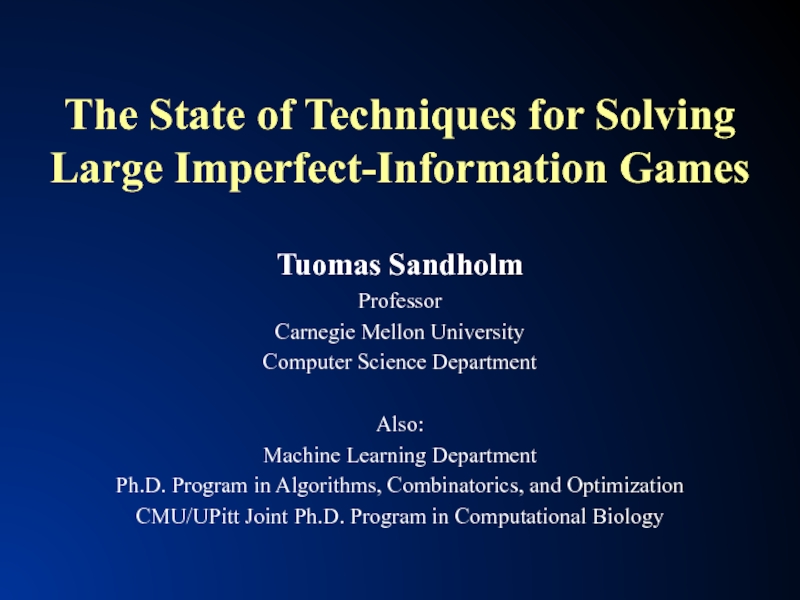
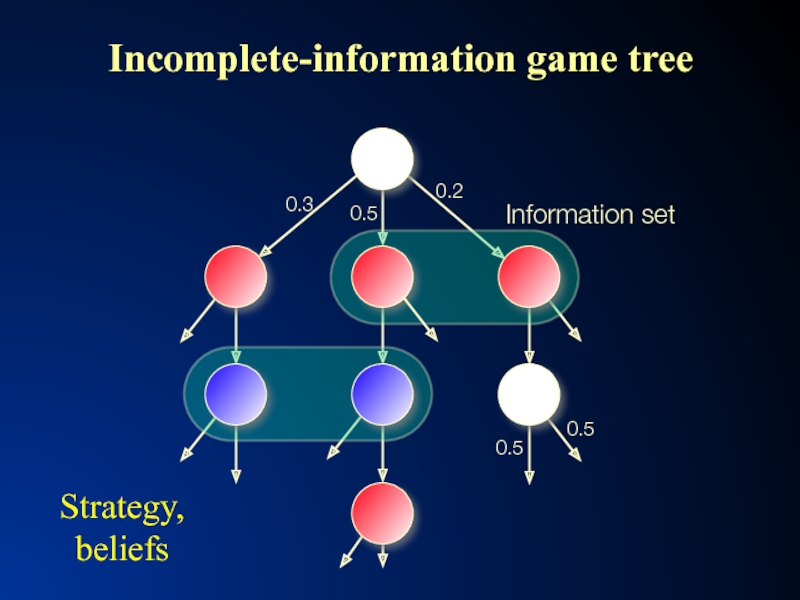
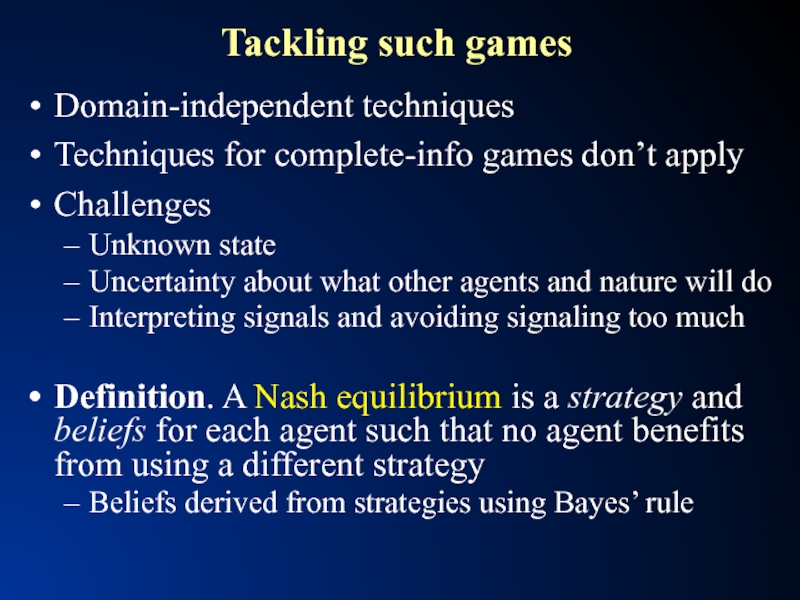
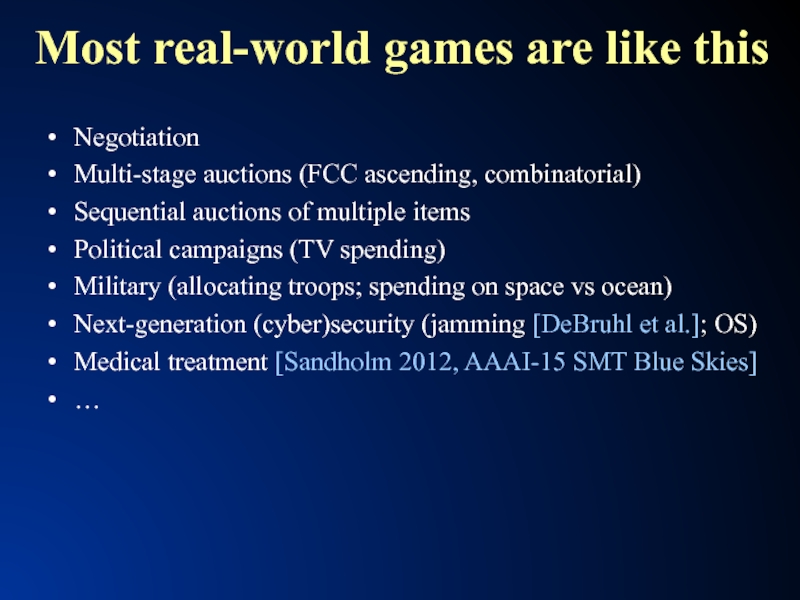
![PokerRecognized challenge problem in AI since 1992 [Billings, Schaeffer, …]Hidden information (other players’ cards)Uncertainty about](/img/tmb/5/431420/cfa7ca3f4c264db69858946d8bfc00b8-800x.jpg)
![Our approach [Gilpin & Sandholm EC-06, J. of the ACM 2007…] Now used basically by](/img/tmb/5/431420/b03a9e46c550998974dafabce2a751b3-800x.jpg)
![Lossless abstraction[Gilpin & Sandholm EC-06, J. of the ACM 2007]](/img/tmb/5/431420/c98f2ace9471e64f6c9a8f645f84a9c1-800x.jpg)
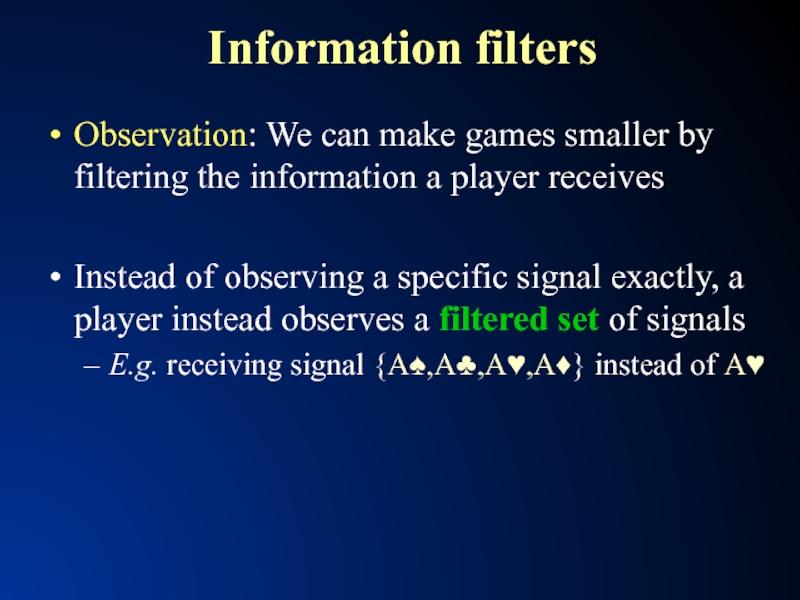
![Solved Rhode Island Hold’em pokerAI challenge problem [Shi & Littman 01]3.1 billion nodes in game](/img/tmb/5/431420/7f336b1618a5d0de7dc02401a27e3546-800x.jpg)
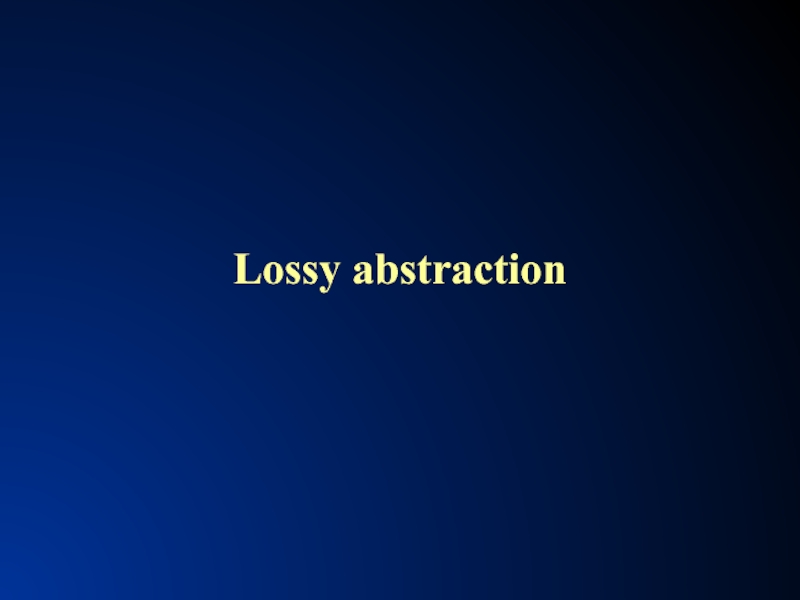
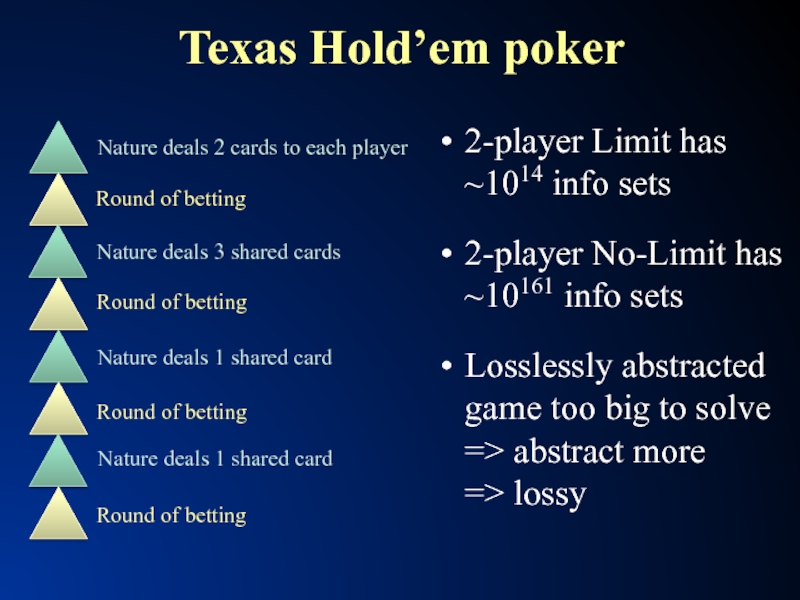
![Important ideas for practical game abstraction 2007-13Integer programming [Gilpin & Sandholm AAMAS-07]Potential-aware [Gilpin, Sandholm &](/img/tmb/5/431420/b4056b3cea1a428a6ee44e8c4f0c7790-800x.jpg)
![Leading practical abstraction algorithm: Potential-aware imperfect-recall abstraction with earth-mover’s distance [Ganzfried & Sandholm AAAI-14] Bottom-up](/img/tmb/5/431420/e21cb960f7544cd909101cf5eb247b1f-800x.jpg)
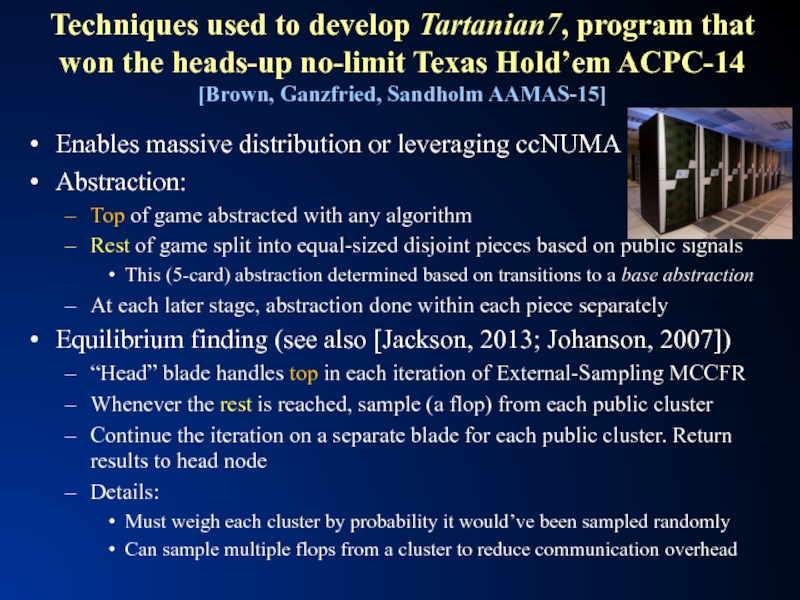
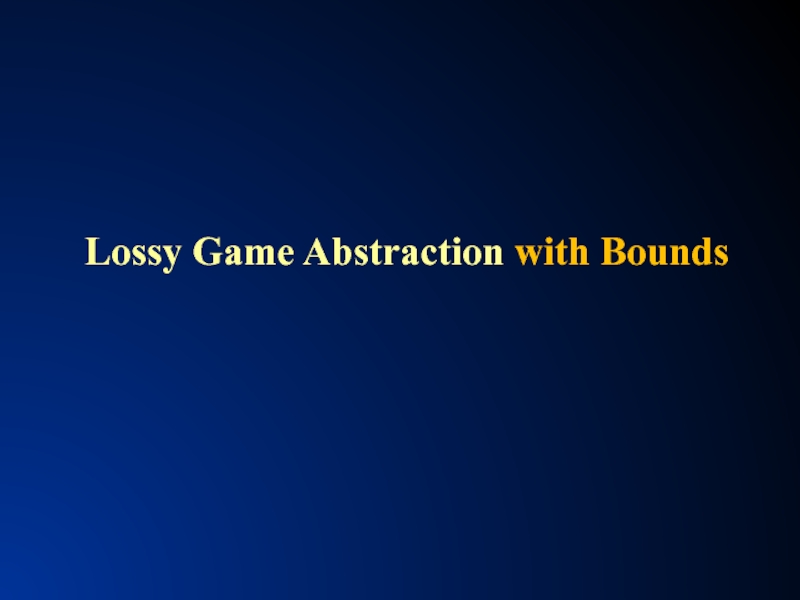
![Lossy game abstraction with boundsTricky due to abstraction pathology [Waugh et al. AAMAS-09]Prior lossy abstraction](/img/tmb/5/431420/476b50e8e11b21bcdc72e10f5e7cef84-800x.jpg)
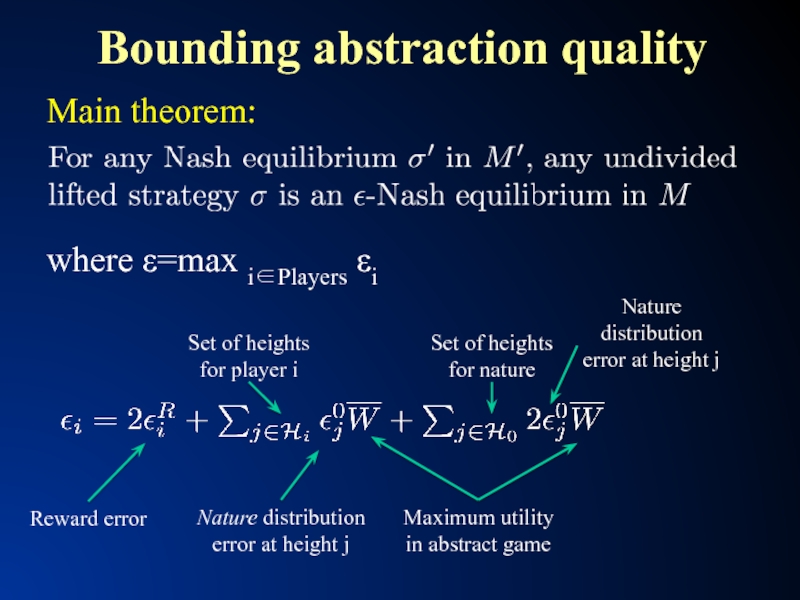
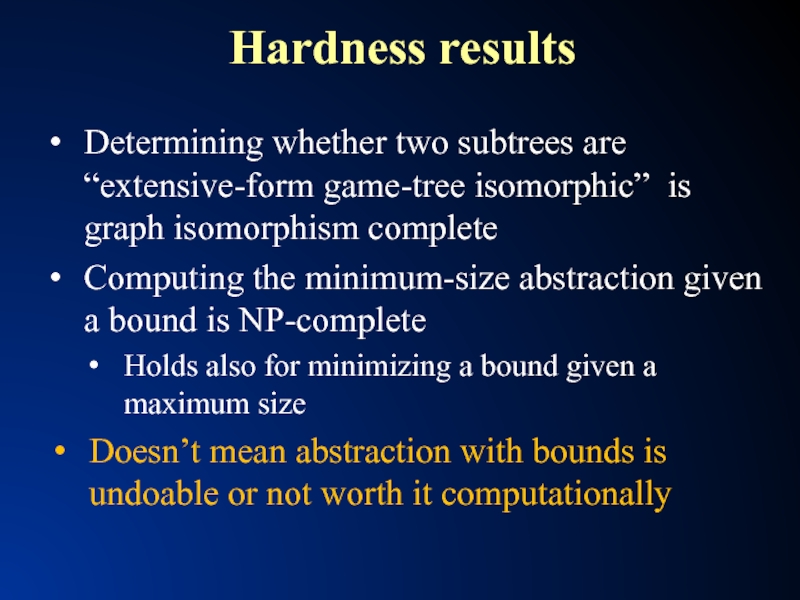
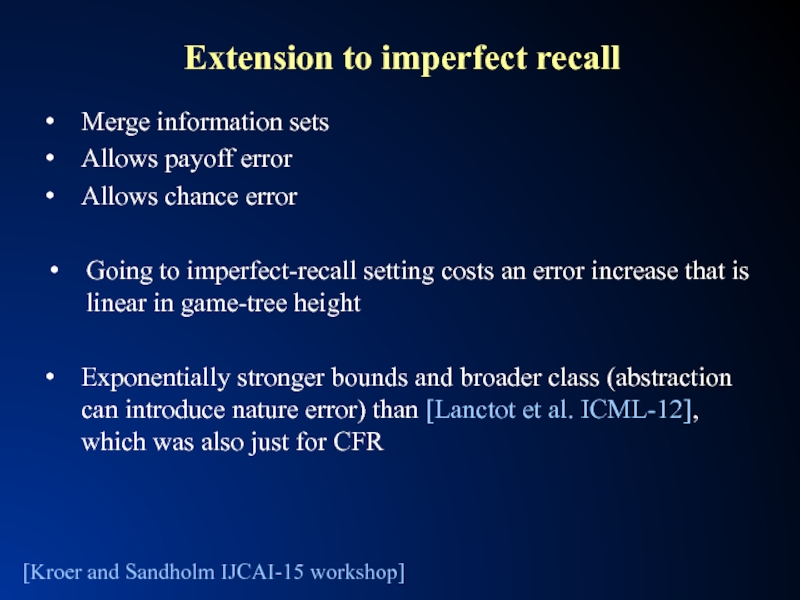
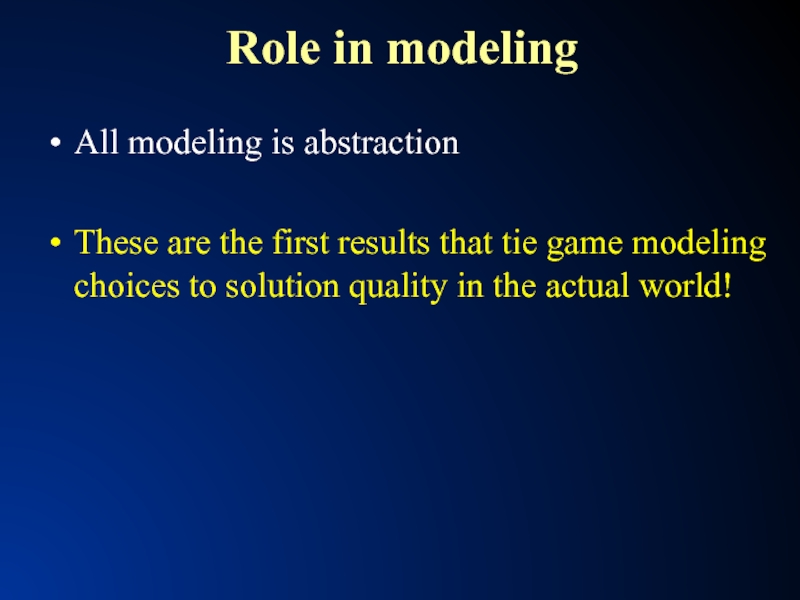
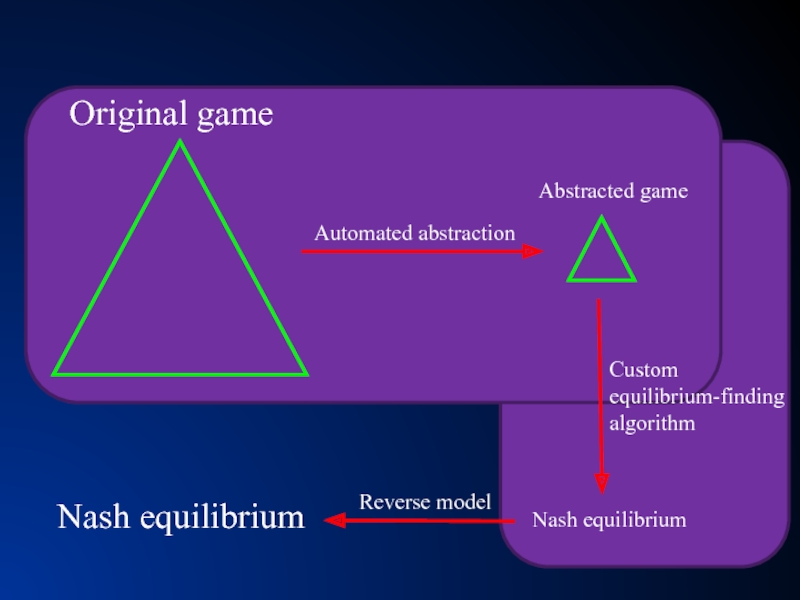
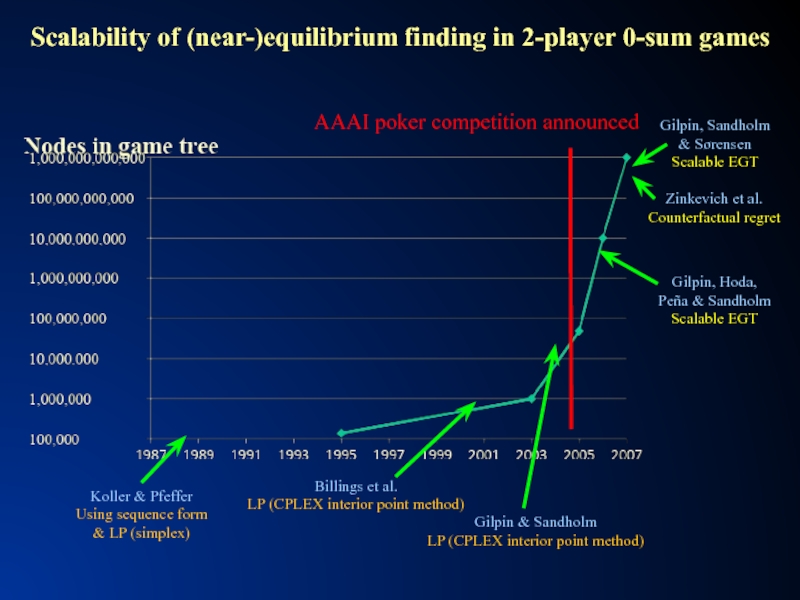
![Scalability of (near-)equilibrium finding in 2-player 0-sum games…GS3 [Gilpin, Sandholm & Sørensen]Hyperborean [Bowling et al.]Slumbot](/img/tmb/5/431420/fae305b11a0c25d5da1a1482b83f2ff7-800x.jpg)
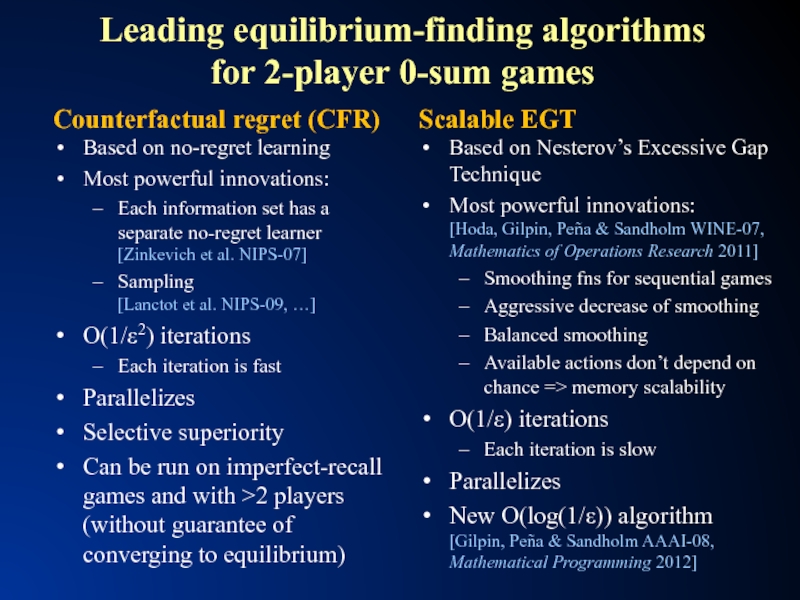
![Better first-order methods [Kroer, Waugh, Kılınç-Karzan & Sandholm EC-15] New prox function for first-order methods](/img/tmb/5/431420/55c73d702bef8c6dc7cf963a91c04d73-800x.jpg)
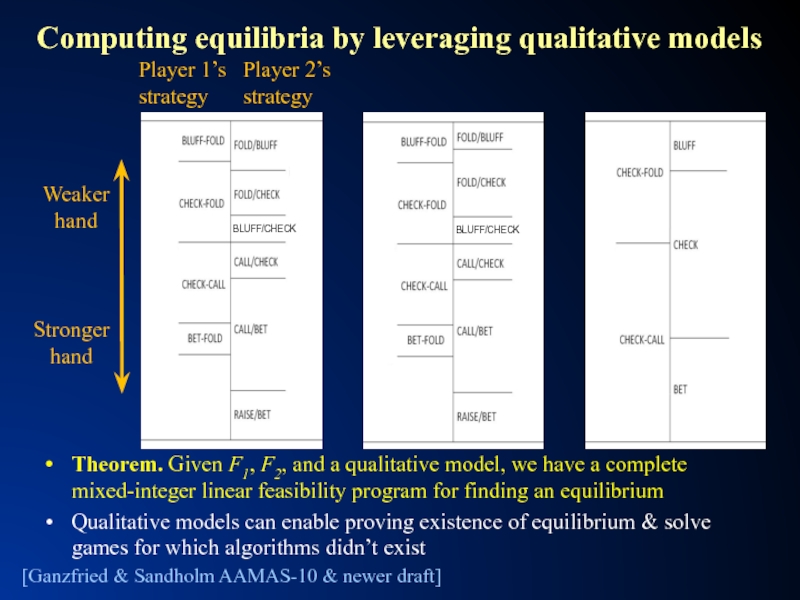
![Simultaneous Abstraction and Equilibrium Finding in Games[Brown & Sandholm IJCAI-15 & new manuscript]](/img/tmb/5/431420/f99d6fa8a3d630b33090d4b3ff104cba-800x.jpg)
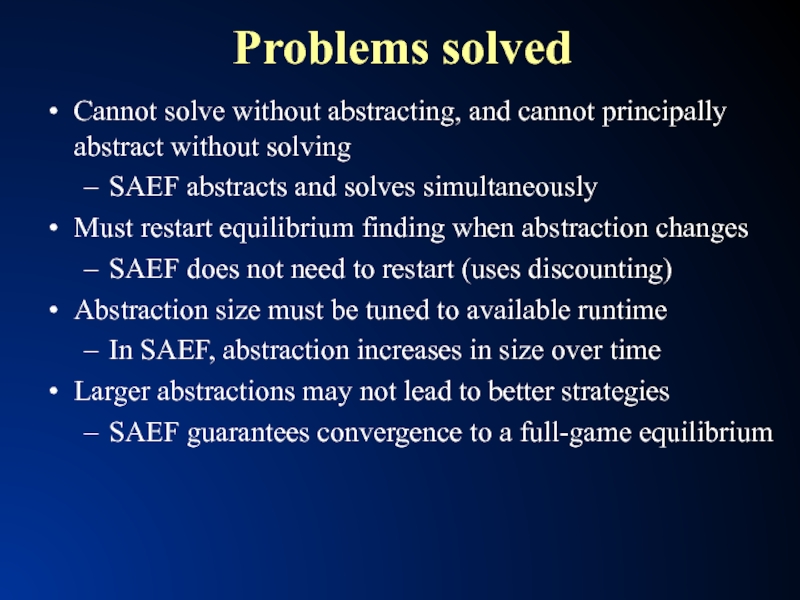
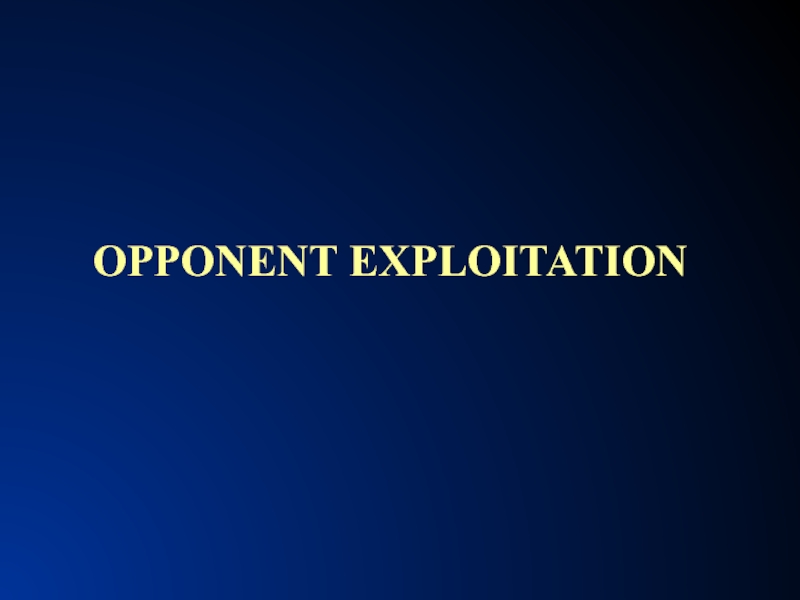
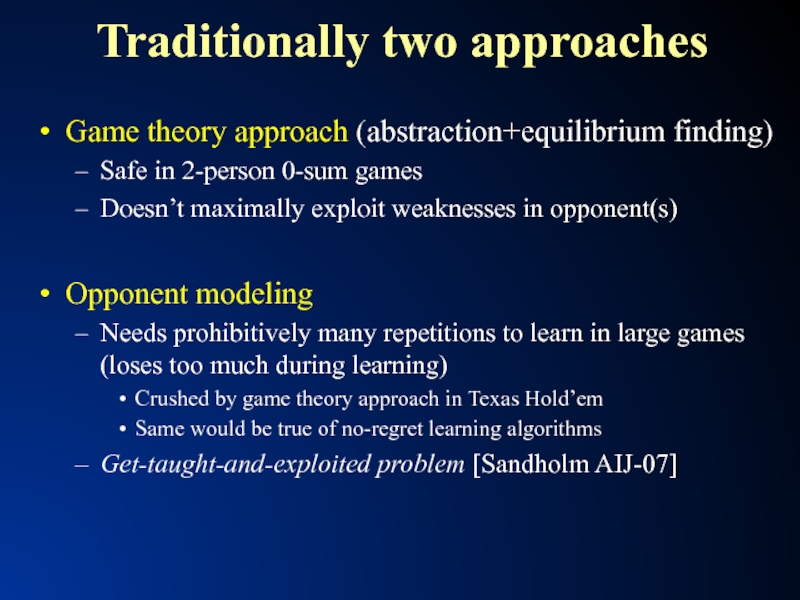
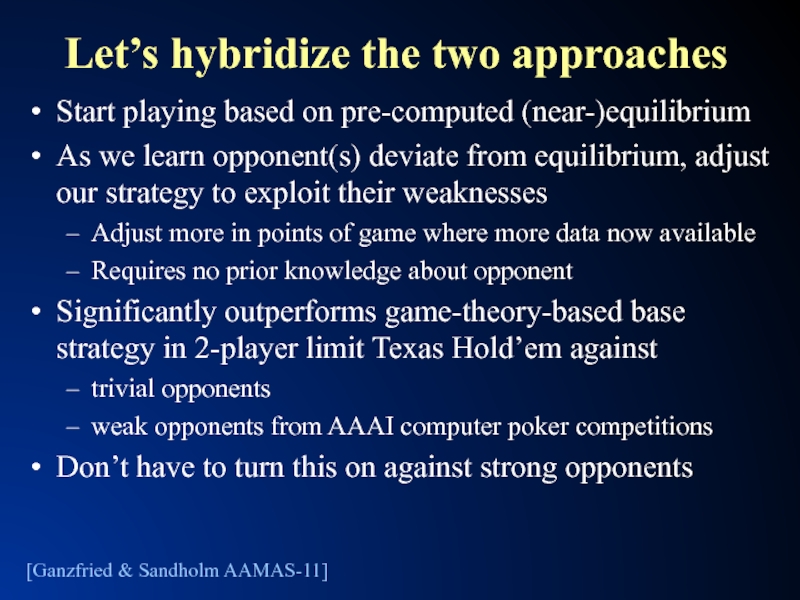
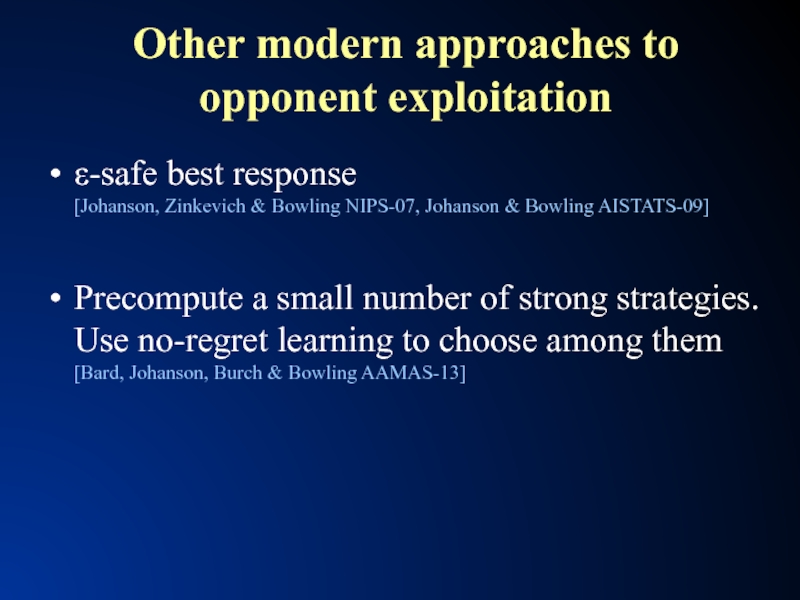

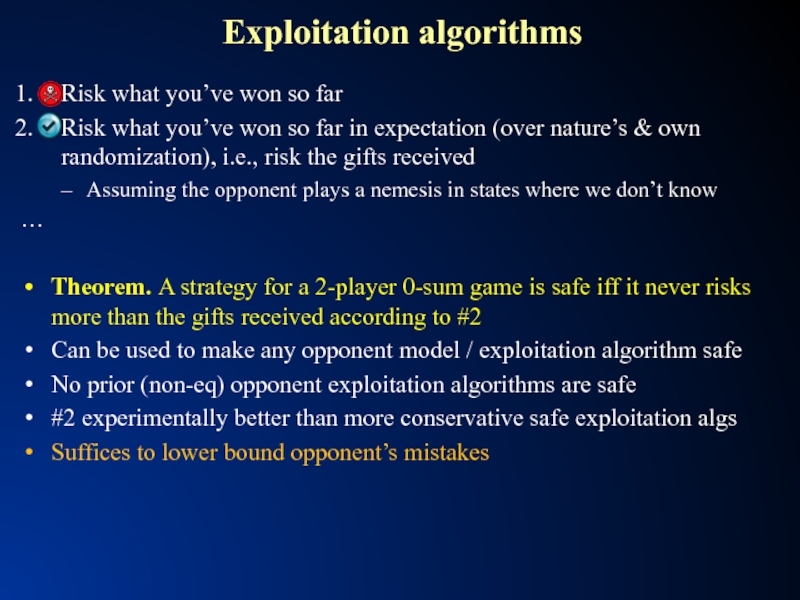
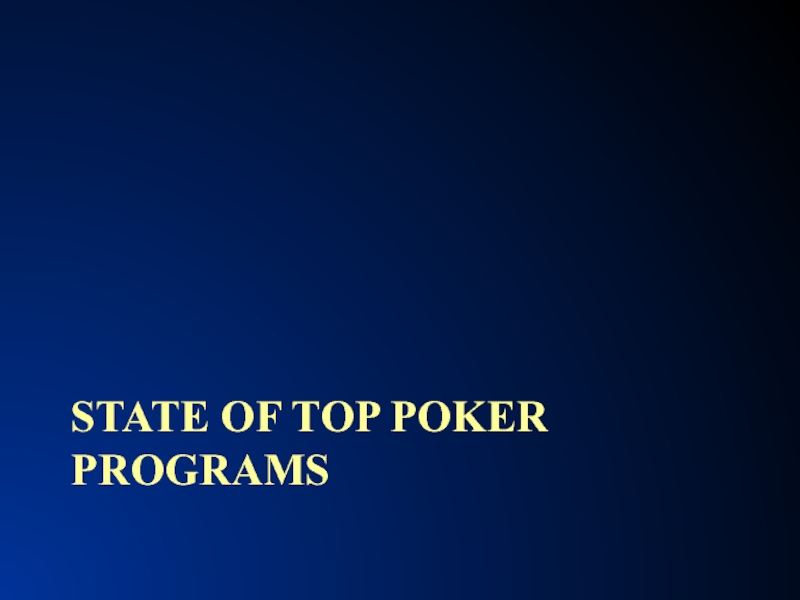
![Rhode Island Hold’emBots play optimally [Gilpin & Sandholm EC-06, J. of the ACM 2007]](/img/tmb/5/431420/9b0be89a2e49dea86fddbbd5b823122e-800x.jpg)
![Heads-Up Limit Texas Hold’emBots surpassed pros in 2008 [U. Alberta Poker Research Group]“Essentially solved” in](/img/tmb/5/431420/caa4130010aa21021f2351474d5f1f7e-800x.jpg)
